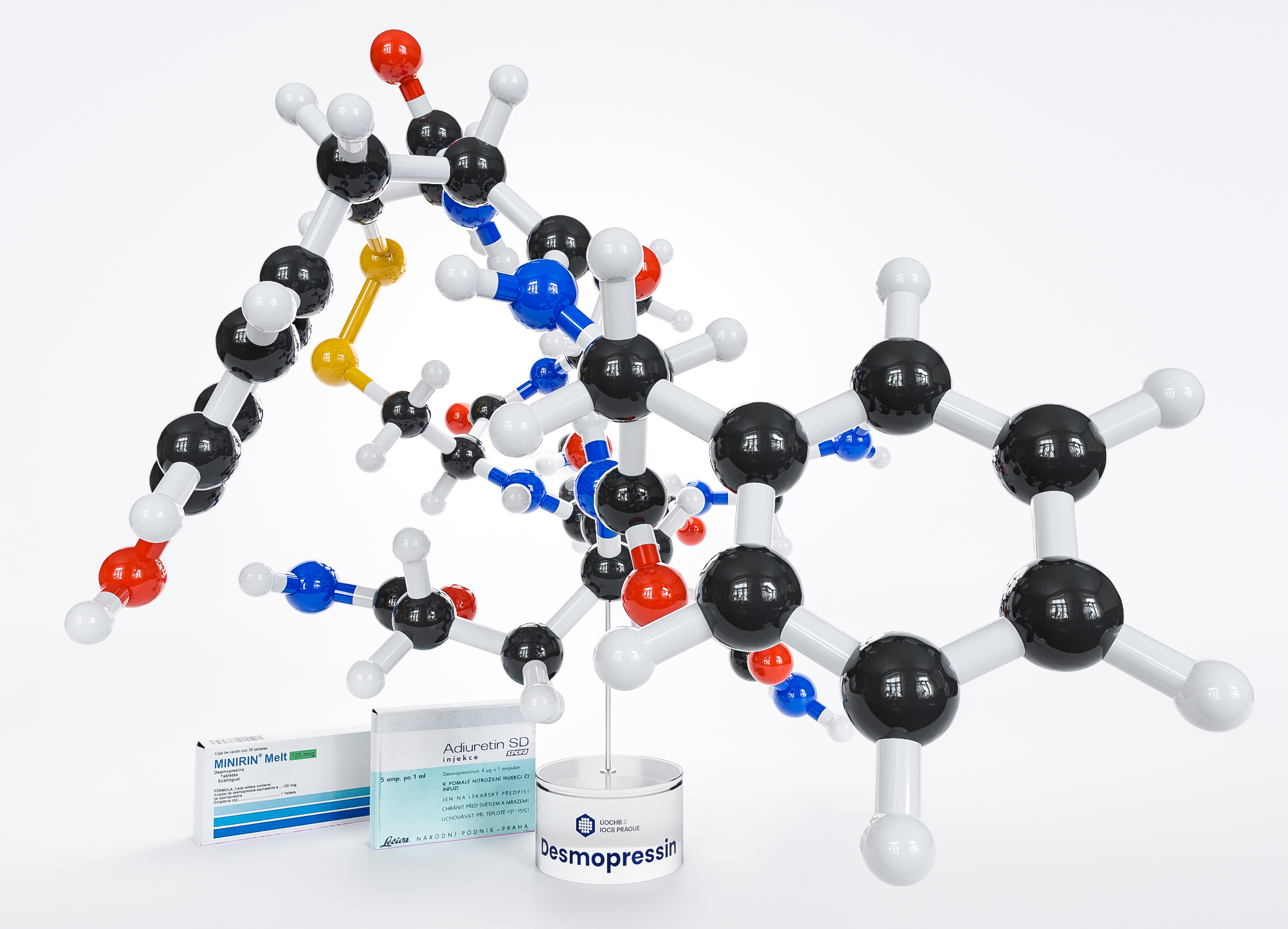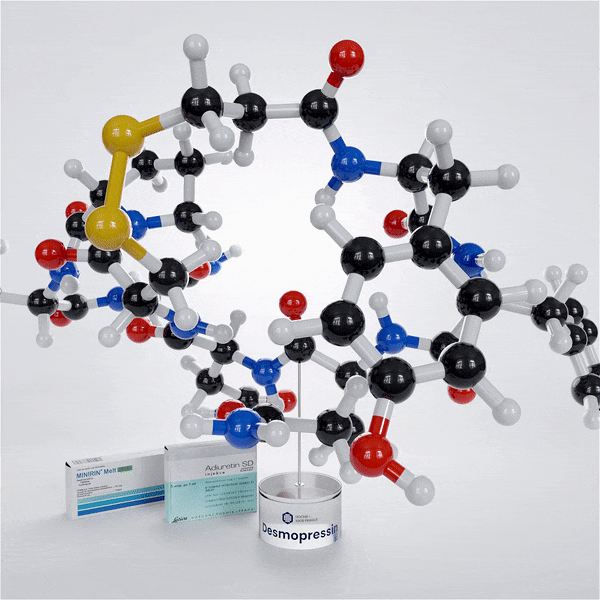Lysin-vasopressin, Terlipressin, Desmopressin
Category: Peptide hormones and their analogues
Registration & producers: Lysin-vasopressin 1960; Terlipressin: Remestyp/Glypressin 1978; Desmopressin: Adiuretin-SH 1972 (Léčiva, Ferring-Léčiva, PolyPeptide Laboratories)

Research on biologically active peptides has a long tradition at IOCB. From the 1950s to the 1980s, it mainly focused on establishing the structure-activity relationship in neurohypophyseal hormone analogues and the discovery of analogues with specific biological activity.
Lysin-vasopressin
Lysin-vasopressin (LVP) naturally occurs in the hypophysis of pigs and hippos. It was the first drug used in the treatment of diabetes insipidus, a condition characterized by consumption of large amounts of liquid (up to 30L/day) and production of dilute urine.
Terlipressin
The extension of the peptide chain of LVP at the N-terminal part resulted in a compound named Terlipressin. Due to its protracted mode of action and low pressoric activity, Terlipressin is currently used to stop bleeding from gastric and duodenal ulcers and for the treatment of esophageal varices.
Desmopressin
Desmopressin, the most successful analogue of vasopressin, was prepared by changing the arginine stereochemistry in position 8 to an unnatural D-coniguration and removing the terminal amino group. These modifications led to an analogue with highly specific antidiuretic activity and a minimal effect on blood pressure.
Milan Zaoral and his team discovered it in the early 1960s, and it was licensed by the Czechoslovak Academy of Sciences to the Swedish pharmaceutical company Ferring AB in the late 1960s. Industrial production of desmopressin began in the early 1970s in both Czechoslovakia and Sweden. Desmopressin became the standard of care in management of diabetes insipidus and has enabled many thousands of patients suffering from this inherited disorder to return to normal life.




